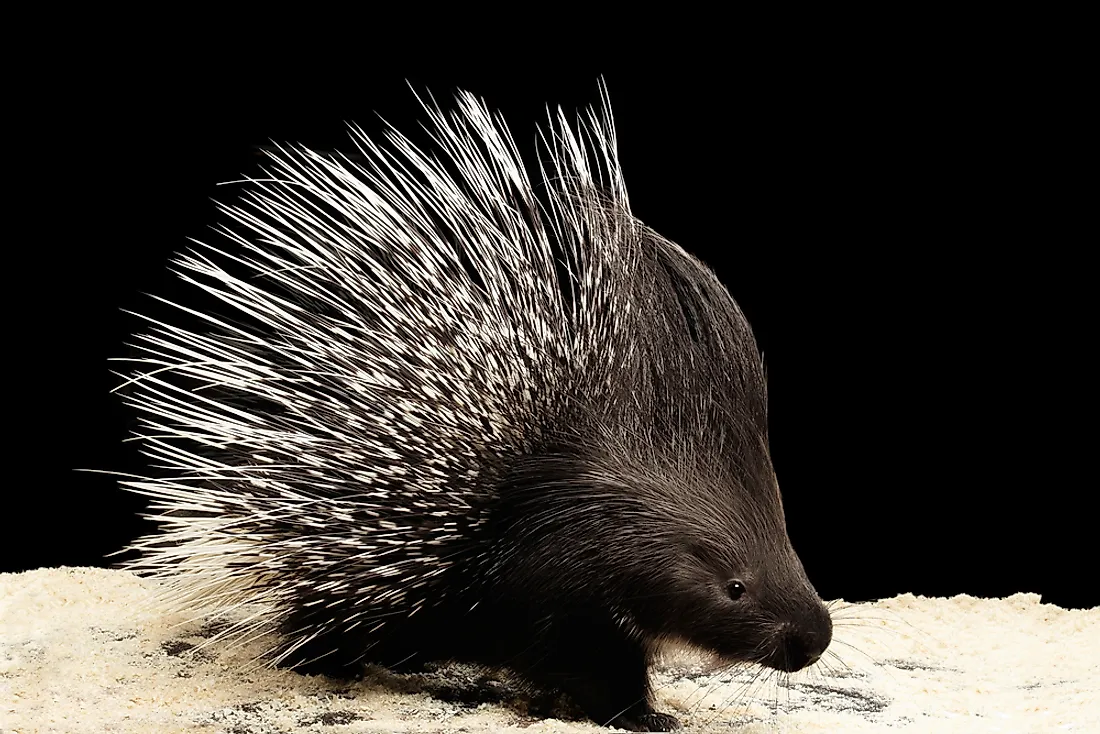Porcupine Facts - Animals of the World

Porcupines belong in the order Rodentia and are easily identifiable by their quill-covered bodies. The small mammals are grouped into two families, Erethizontidae (new world porcupines) and Hystricidae (old world porcupines). Old world and new world porcupines differ in their range and habits, dietary patterns, size and appearance, and behavior. The animals are known for their sharp and poisonous quills. Some porcupines have backward facing barbs that make it difficult for a predator to dislodge if attacked. The backward facing barbs have been an influence in the development of the hypodermic needle. Despite their protective spikes, porcupines are preyed upon by many animals such as great horned owls, bobcats, mountain lions, wolves, and coyotes. In some African, Arabian, and European cultures, the porcupine is hunted as a source of food. In agricultural areas, porcupines are hunted because their foraging behavior leads to the destruction of crops. Porcupines are found in relatively high populations and are classified as a least concern species.
4. Physical Description
The size and appearance of new and old world porcupines varies significantly. New world porcupines are stout, small, and have relatively shorter quills on the back which are interspersed with long soft hairs. They have a body length of about 12 inches with some larger porcupines reaching 34 inches. Due to their tree climbing, new world porcupines have long prehensile tails. New world porcupines have four teats unlike the six that old world porcupines have. Old world porcupines are larger and heavily built. Their body length varies between 11-19 inches and their weight varies between 3.3-5lbs. Larger individuals can reach a length of 33 inches and can weigh 29-59 lbs. The spikes of old world porcupines are longer and exist in clusters interspersed with shorter quills.
3. Habitat and Range
Old world porcupines are found in southern Europe, most parts of Africa, and western and southern Asia. New world porcupines are found in South and North America, particularly in wooded and forested areas. Porcupines are adapted to a variety of habitats including tropical and temperate regions. They can occupy forests, grasslands, deserts, rocky outcrops, and rock crevices.
2. Diet
New world porcupines are arboreal and forage within trees. Some of the new world species live predominantly in trees while some build their nests on the ground. Foraging for new world species can occur during the day or night. Old world porcupines are ground dwelling terrestrial animals. They are nocturnal and display activity from dusk to dawn. Porcupines feed on leaves, herbs, roots, twigs, bulbs, fruits, barks, seeds, nuts, and grasses. New world porcupines also feed on insects, conifers, and small reptiles.
1. Behavior
Porcupines are mostly nocturnal and move in either small groups or in solitary. Despite their poor sight, porcupines have a highly developed sense of smell and hearing. They freeze when approached by predators and sometimes show aggressive behavior such as running backwards or sideways towards the attacker to implant their spikes. Sometimes the porcupine releases its spikes by shaking which causes the loose ones to fall off. Porcupines are vocal and will grunt when attacked to scare off predators. They may also go into their holes head first leaving their spikes exposed to keep the predator from attacking them. Against popular belief, porcupines cannot shoot their spikes, however, they are poisonous.











